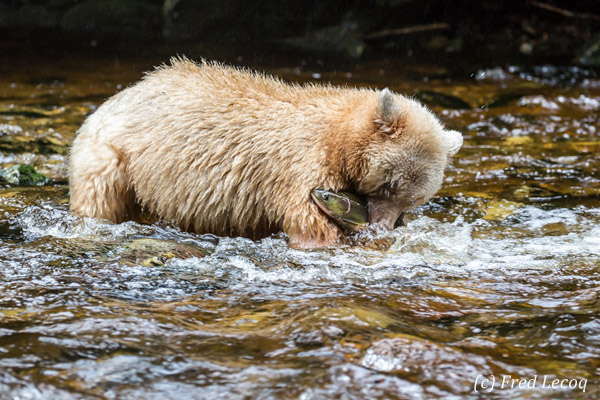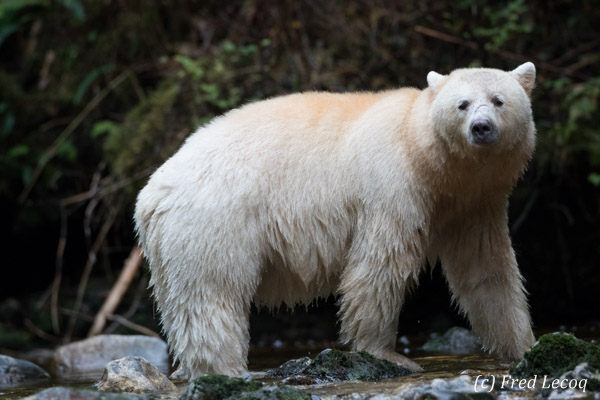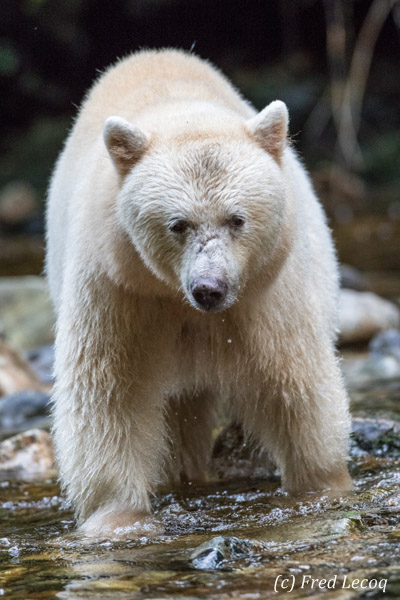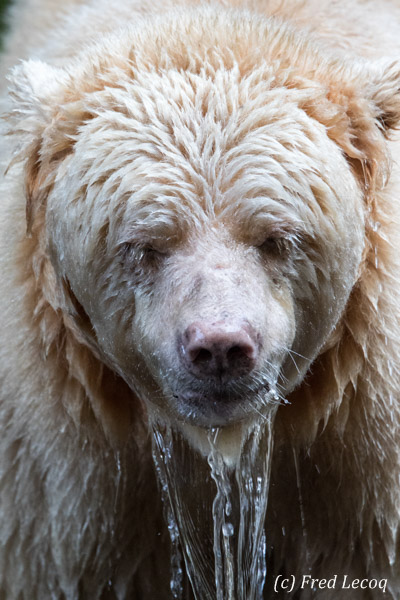Kermode Bear or Spirit Bear
The Kermode Bear (Ursus americanus kermodei), or “Spirit Bear”, is a rare subspecies of the black bear that lives on the central coast of British Columbia. Approximately one in ten bears have a creamy white coat, but that does not mean that it is a close relative of the polar bear that belongs to a different species (Ursus maritimus). The peculiarity of the fur of the Kermode bear is, in fact, due to the presence of a recessive gene (the MC1R gene). It is, therefore, not a case of albinism but an example of leucism; thus, a black bear mother may have a white bear cub.
A male Kermode bear can reach 225 kilograms or more; the females are much smaller with a maximum weight of 135 kg. Standing, a male can reach 1m80 tall. The population of this omnivorous bear is estimated by scientists to be 400 individuals living at large between Vancouver Island and Alaska.
The Kermode bear was named after Francis Kermode, one of the first scientists to have studied this unique animal. Scientists have discovered that black bears are not as effective at catching fish as polar bears, as polar bears are less visible from a fish’s point of view.
The Kermode bear holds an important place in the folklore of the local Amerindians. It survived, in large part, thanks to the Amerindians who kept its existence secret from the hunters. Since April 2006, the Kermode bear has become the official animal of British Columbia.







